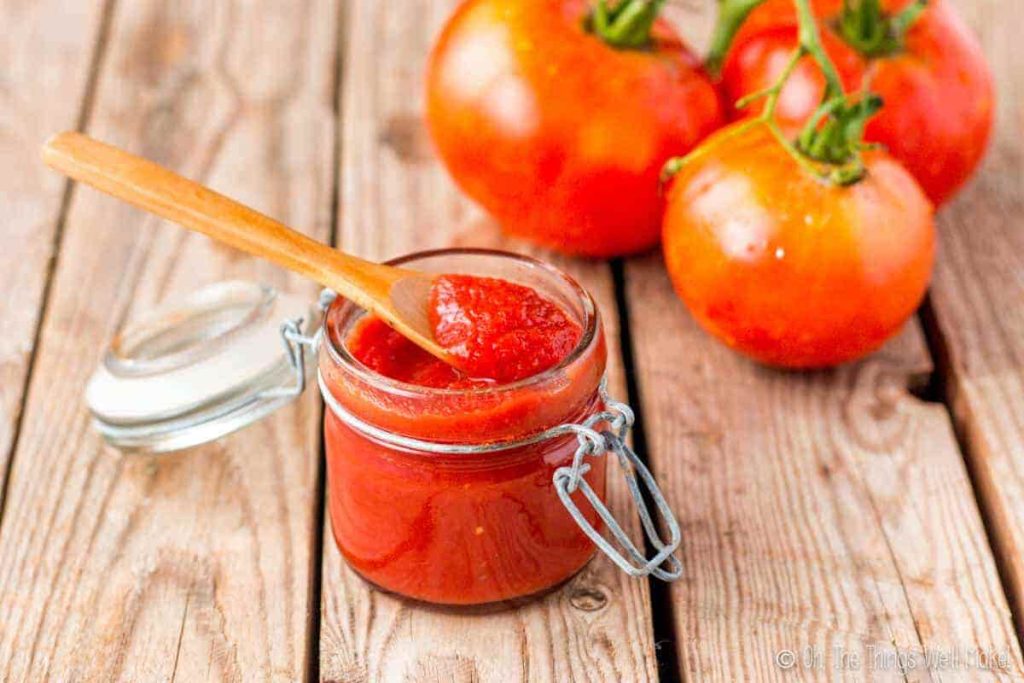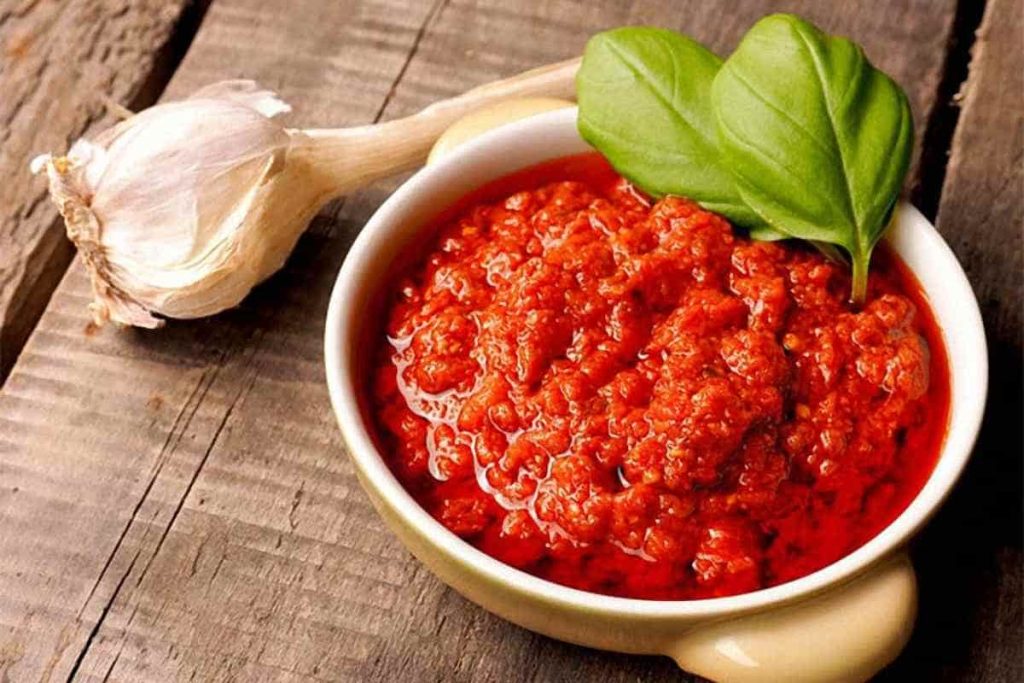does it make a difference to tomato paste if it is left outside? Would it go bad if it is not preserved in the fridge? How long is the shelf life of tomato paste in the refrigerator?
Do you happen to know how long tomato paste may be stored in the refrigerator? I not only have all the answers to your questions, but I will also instruct you on how to properly keep this incredible component.
Tomato paste can normally be stored for up to six months beyond its expiration date if the jar has not been opened. An opened one will often remain usable for between 7 and 10 days if it is properly stored. That is a substantial break from the norm. Mold is the greatest threat that tomato sauce often faces.
It is not a good idea to scrape off the mold and utilize the sauce, even though certain people thrive on risk. Discoloration that is brownish or black, as well as an odd odor, are the earliest indicators of trouble. Additionally, the texture can be informative in its own right.
It ought to have a firm and sturdy build. Please do not consume it if it turns watery and runny. Thank you. Even if everything appears to be in order, you shouldn’t risk spoiling an entire meal due to a faulty tomato paste without first giving it a taste test.
Tomato paste is a practical substitute for fresh tomatoes that can be used to boost the tomato flavor in a pasta sauce or add some acidity to your favorite meals for a brighter flavor. Tomato paste also adds extra flavors and can be used in situations where fresh tomatoes are not available.
Is it OK to consume tomato paste from a can even beyond the “expiration” date that is stated on the jar? Yes, as long as it has been stored properly, the packaging has not been damaged, and there are no signs of spoilage.
The commercially packaged tomato paste will typically carry a “Best By,” “Best if Used By,” “Best Before,” or “Best When Used By” date; however, this date is not a safety date; rather, it is the manufacturer’s estimate of how long the tomato paste will remain at its peak quality.

Yes, as long as it has been stored properly, the packaging has not been damaged, and
Tomato paste can technically be maintained for an endless amount of time if it is continually frozen at 0 degrees Fahrenheit; the dates that are specified are there just to ensure the product’s highest possible quality.
I have some tomato paste left over; can I store it in the refrigerator?
Cans, glass jars, and even tubes can be used to store tomato paste. On the other hand, the processes that are utilized in the preservation of tomato paste are virtually identical.
When the bottle is opened, it indicates that your tomato paste needs to be stored in the refrigerator and the correct packaging.
You can use cling wrap to seal the can, or if you have a plastic bag handy, you can use it instead. Alternately, the paste, if there is any leftover, should be stored in an airtight container.How long is the shelf life of tomato paste when stored in the refrigerator?
How long may tomato paste in an opened can be kept in the refrigerator before it goes bad? Tomato paste can be stored in the refrigerator for up to seven days if it is kept at a cold temperature.
Because tomato paste naturally has a high level of moisture, the most likely explanation for why it has gone bad is that it has become a fertile habitat for the growth of mold. A moldy surface will appear on the tomato paste, and you should throw it away as soon as you notice it. The color of the mold may range from greenish to yellowish.
Never opened tomato paste:
People don’t know how to store tomato paste properly and they rarely use an entire can for a meal, which causes the tomato paste to go bad and moldy.
This results in a significant amount of wasted tomato paste, even though tomato paste is one of the most common ingredients in almost all cuisines around the world. In most cases, a can of tomato paste that has not been opened will maintain the highest possible quality for approximately 18 to 24 months if it is stored correctly; nevertheless, it is typically okay to use after this point.

You can purchase tomato paste in either a can or a tube, but the tube is almost usually the better option (the exception being when you are cooking in huge batches that require the full can). Tomato paste that has been opened can be stored in the refrigerator for anywhere between 6 and 8 weeks. After the can of tomato paste has been opened, it will only remain edible for between 5 and 7 days.
Tomato paste with the lid already off:
Tomato sauce is a pantry staple that is affordable, flexible in its use, and savory. It also adds depth of flavor and layers to the foods you prepare. It works wonderfully for preparing tomato sauces that can be used in a variety of foods, including pizza, spaghetti, and chili.
Because it has a strong umami flavor, it can also improve the flavor of soups, stews, and braised meat, especially when it is caramelized.
This is especially true when the umami flavor is caramelized.
The precise answer is heavily influenced by the conditions under which it was stored; opened jars of tomato paste should be kept cool and properly wrapped. After opening, store tomato paste in the refrigerator in an airtight container made of plastic or glass and refrigerate it to lengthen its shelf life and cut down on food waste.
How to properly store tomato paste in a step-by-step guide
Once the lid has been removed from a can of tomato paste, the remaining contents can be stored in the refrigerator for up to five days. Therefore, you will either have to get rid of it or use tomato sauce in the meals you prepare for the rest of the week.

There is a third choice available in case you are like me and neither of the other two sounds appealing. It is imperative that you keep in mind the fact that it is never a good idea to store an open tin can in the refrigerator unless you intend to use it within the next few hours.
How should one preserve a jar of tomato paste that is almost completely depleted?
Here’s how to keep your tomato paste fresh in the refrigerator:
After you have through cooking, transfer any remaining sauce to a container that can seal airtight.
Make use of the smallest container that will do the job.
Check to see that the container is completely sealed and contains the absolute minimum amount of air possible.
Never forget to take it out of the can!
Use it in a week.
How to Keep Tomato Paste Frozen in the Following Ways:
Place the remaining tomato paste in the ice cube tray, and then place the tray and its contents in a labeled freezer bag. Use it up within the next three months.
The remaining tomato sauce should be distributed in equal amounts across a baking sheet in the form of patches.
Put them in a freezer bag and label them before you freeze them until they are solid. You won’t need to measure the next time if you do it this way.
You have three months to use them.
Can I freeze tomato paste?
If you wish to conserve tomato paste for a longer amount of time, you can do so by placing it in the freezer first. If you bought a can of tomato paste and you have leftovers that you don’t plan to use up in the next 5 days, this is an excellent strategy to prevent wasting food.
All you need to do is put the leftovers in the freezer. The fact that the quality of the tomato paste is diminished after defrosting is the primary disadvantage. On the other hand, because tomato paste is so frequently used in ready-made recipes, distinguishing the two can be challenging.
Put some of the paste into each of the ice cube pans about halfway. Instead of defrosting the complete container of frozen tomato paste, defrost only the amount needed for your cooking preparations.
Remove the frozen tomato paste from the ice cube trays and place it in a bag before placing it in the freezer. When you need to utilize tomato paste, remove one scoop from the freezer and allow it to defrost slowly over low heat in the saucepan. Only then should you begin cooking.
You could simply cover a can with plastic wrap and place it in the freezer for the night. The following day, simply use the metal end to push the paste out of the open end of the tube. Remove the item from the can and place it back in its original wrapping. You are free to remove one for consumption at each meal as required.











Your comment submitted.